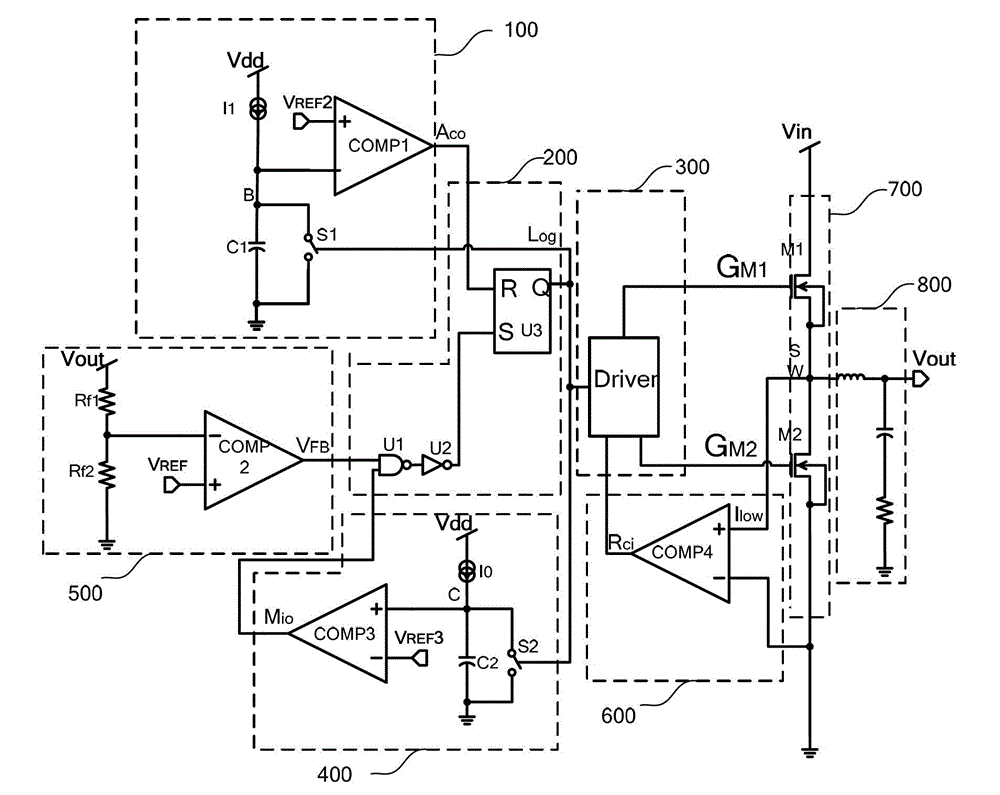Self-adaptive constant-on-time control circuit
A constant on-time, control circuit technology, applied in control/regulating systems, electrical components, regulating electrical variables, etc., can solve problems such as operating frequency changes, achieve frequency concentration, improve efficiency, and reduce switching losses.
- Summary
- Abstract
- Description
- Claims
- Application Information
AI Technical Summary
Problems solved by technology
Method used
Image
Examples
Embodiment Construction
[0030] The present invention will be further described below in conjunction with the accompanying drawings and specific embodiments.
[0031] The structural diagram of the Adaptive constant on time (Acot) control circuit 100' in the embodiment of the present invention is as follows figure 2 As shown, it includes NMOS transistors MN1, MN2, PMOS transistors MP1, MP2, operational amplifier A0, comparator COMP1, capacitor C1, switch unit S1, and resistor Ron. Among them, NMOS transistor MN1, operational amplifier A0, and resistor Ron form a clamping position The op amp fixes the voltage at point A equal to VREF1. The specific connection relationship is that the inverting input terminal of the operational amplifier A0 is connected to the reference voltage VREF1, the gate of the NMOS transistor MN1 is connected to the output of A0, the source and substrate of MN1 are connected to the ground potential, and the drain of MN1 is connected to the high-gain A0. To the input terminal, no...
PUM
 Login to View More
Login to View More Abstract
Description
Claims
Application Information
 Login to View More
Login to View More - R&D
- Intellectual Property
- Life Sciences
- Materials
- Tech Scout
- Unparalleled Data Quality
- Higher Quality Content
- 60% Fewer Hallucinations
Browse by: Latest US Patents, China's latest patents, Technical Efficacy Thesaurus, Application Domain, Technology Topic, Popular Technical Reports.
© 2025 PatSnap. All rights reserved.Legal|Privacy policy|Modern Slavery Act Transparency Statement|Sitemap|About US| Contact US: help@patsnap.com



